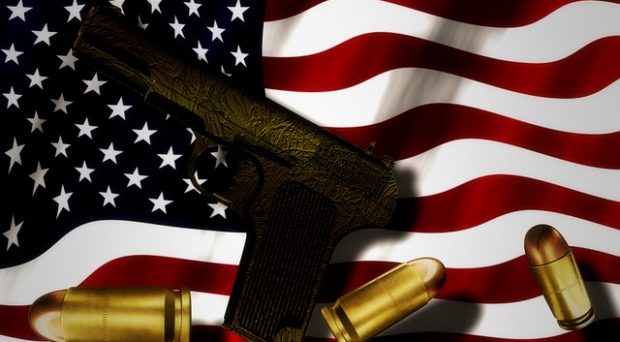
Background
Alcohol and firearms are a dangerous combination and are commonly involved in suicide in the United States. This has only increased in importance as a public health issue as alcohol drinking, firearm sales, and suicides in the United States have all increased since the start of the covid-19 pandemic. State alcohol policies and state firearm policies might impact alcohol and firearm related suicide, but it is unknown how these policies specifically relate to these suicides, or how these policies might interact with one another.
The study
We conducted a cross-sectional study to assess relationships between alcohol policies, firearm policies, and U.S. suicides in 2015 involving alcohol, firearms, or both. We used the Alcohol Policy Scale, previously created and validated by our team, to assess alcohol policies and the Gun Law Scorecard from Giffords Law Center to quantify firearm policies. Suicide data came from the National Violent Death Reporting System. State- and individual-level GEE Poisson and logistic regression models assessed relationships between policies and firearm- and/or alcohol-involved suicides with a 1-year lag.
Results
Higher alcohol and gun law scores were associated with reduced incidence rates and odds of suicides involving either alcohol or firearms.
In the United States in 2015, alcohol and/or firearms were involved in 63.9% of suicides. Higher alcohol and gun law scores were associated with reduced incidence rates and odds of suicides involving either alcohol or firearms. For example, a 10% increase in alcohol policy score was associated with a 28% reduction in the rate of suicides involving alcohol or firearms. Similarly, a 10% increase in gun policy score was associated with a 14% decrease in the rate of suicides involving firearms.
These relationships were similar for suicides that involved alcohol and firearms. For example, a 10% increase in alcohol policy score was associated with a 52% reduction in the rate of suicides involving alcohol and firearms. A 10% increase in gun policy score was associated with a 26% reduction in the rate of suicides involving alcohol and firearms.
In addition, we found synergistic effects between alcohol and firearm policies, such that states with restrictive policies for both alcohol and firearms had the lowest odds of suicides involving alcohol and firearms.
Conclusions and next steps
Results of the study suggest that laws restricting firearms ownership among high-risk individuals, including those who drink excessively or have experienced alcohol-related criminal offenses, may reduce firearm suicides.
We found restrictive alcohol and firearm policies to be associated with lower rates and odds of suicides involving alcohol or firearms, and alcohol and firearms and our research suggests that alcohol and firearm policies may be a promising means by which to reduce suicide. These protective relationships were particularly striking for suicides involving both alcohol and firearms as well as in the strong protective interaction between alcohol and firearm policy variables, particularly for suicides involving alcohol. These findings, taken in the context of the broader literature, also suggest that laws restricting firearms ownership among high-risk individuals (so-called ‘may issue’ laws), including those who drink excessively or have experienced alcohol-related criminal offenses, may reduce firearm suicides.
Because this was a cross-sectional analysis, this should be considered a hypothesis-generating study that cannot prove a causal association between alcohol or firearm policies and suicide. In future research, studies using multiple years of policy and suicide data would strengthen causal inference.
Stronger alcohol and firearm policies are a promising means to prevent a leading and increasing cause of death in the U.S. The findings further suggest that strengthening both policy areas may have a synergistic impact on reducing suicides involving either alcohol, firearms, or both.
Comments